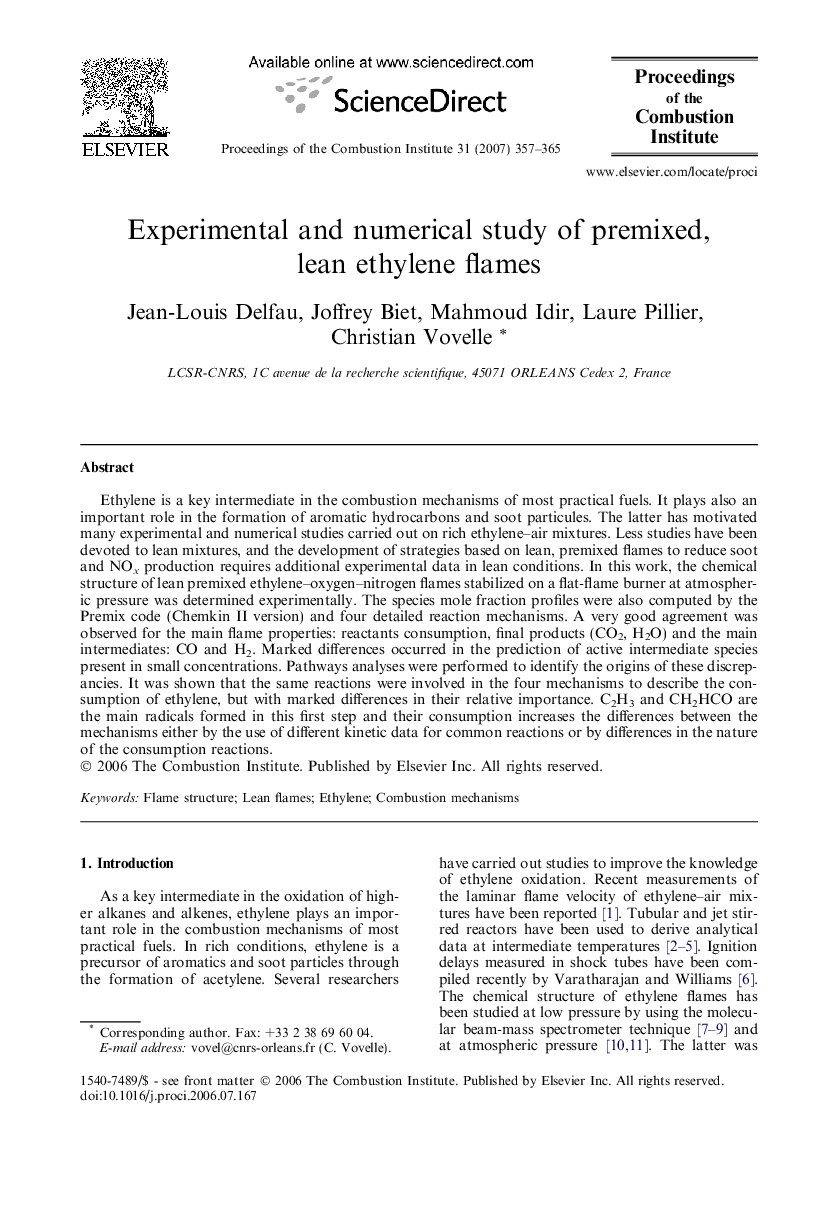| Article ID | Journal | Published Year | Pages | File Type |
|---|---|---|---|---|
| 240739 | Proceedings of the Combustion Institute | 2007 | 9 Pages |
Ethylene is a key intermediate in the combustion mechanisms of most practical fuels. It plays also an important role in the formation of aromatic hydrocarbons and soot particules. The latter has motivated many experimental and numerical studies carried out on rich ethylene–air mixtures. Less studies have been devoted to lean mixtures, and the development of strategies based on lean, premixed flames to reduce soot and NOx production requires additional experimental data in lean conditions. In this work, the chemical structure of lean premixed ethylene–oxygen–nitrogen flames stabilized on a flat-flame burner at atmospheric pressure was determined experimentally. The species mole fraction profiles were also computed by the Premix code (Chemkin II version) and four detailed reaction mechanisms. A very good agreement was observed for the main flame properties: reactants consumption, final products (CO2, H2O) and the main intermediates: CO and H2. Marked differences occurred in the prediction of active intermediate species present in small concentrations. Pathways analyses were performed to identify the origins of these discrepancies. It was shown that the same reactions were involved in the four mechanisms to describe the consumption of ethylene, but with marked differences in their relative importance. C2H3 and CH2HCO are the main radicals formed in this first step and their consumption increases the differences between the mechanisms either by the use of different kinetic data for common reactions or by differences in the nature of the consumption reactions.
